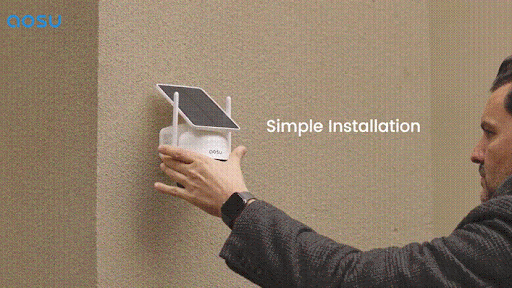Introduction
Investing in a solar outdoor camera like aosu provides a reliable and eco-friendly security solution. However, to ensure continuous surveillance, it’s essential to maximize battery efficiency. Several factors impact battery life, including camera placement, usage settings, and environmental conditions. In this guide, we’ll explore effective ways to extend the battery life of your aosu solar-powered security camera for long-term performance.
Factors Affecting Battery Life
Understanding what influences battery performance can help you make necessary adjustments for better efficiency:
- Weather Conditions– Extreme heat or cold can impact battery efficiency. Batteries drain faster in freezing temperatures and may overheat in direct sun exposure.
- Camera Placement– Positioning the camera where it gets optimal sunlight is crucial for maintaining a full charge.
- Usage & Settings– Higher motion detection sensitivity and continuous recording can drain the battery faster.
- Wi-Fi Connectivity– A weak signal forces the camera to work harder, consuming more power.
Best Practices to Extend Battery Life
1. Optimize Camera Placement
Proper placement is key to ensuring your solar outdoor camera charges efficiently. Install the camera in an area with at least 3–5 hours of direct sunlight per day. Avoid placing it under tree cover or near objects that cast shadows over the solar panel. Adjusting the angle of the panel towards the sun can also improve charging efficiency.
2. Adjust Motion Detection Settings
Motion detection is one of the biggest battery drainers. To improve efficiency:
- Reduce motion sensitivity to avoid unnecessary alerts.
- Set up activity zones to focus monitoring on key areas rather than tracking every movement.
- Use a scheduled recording modeinstead of continuous recording.
3. Manage Video Recording & Storage
Higher resolution and longer video clips require more power. If high-definition footage isn’t essential, lowering the recording resolution to 1080p instead of 2K or 4K can help extend battery life. Additionally, reducing the clip length and enabling event-based recording instead of 24/7 monitoring can conserve power.
4. Maintain the Solar Panel & Battery
- Clean the Solar Panel Regularly– Dust, dirt, or leaves on the panel can block sunlight and reduce charging efficiency. Wiping it down once a month helps maintain peak performance.
- Check Battery & Firmware Updates– Keeping the camera’s software up to date ensures it operates efficiently. If the battery starts to degrade over time, replacing it might be necessary.
Troubleshooting Common Battery Issues
If your solar outdoor camera isn’t holding a charge, consider these solutions:
- Reposition the Solar Panel– Ensure it’s receiving direct sunlight and not obstructed by shadows.
- Check the Wi-Fi Signal– If the connection is weak, move the router closer to the camera or install a Wi-Fi extender.
- Restart & Reset the Camera– Sometimes, a factory reset can resolve software issues affecting battery performance.
Why Choose aosu Solar Outdoor Cameras?
aosu solar-powered security cameras stand out for their efficient power management, weather-resistant design, and advanced motion detection. Compared to competitors, they offer longer battery life, smart power-saving modes, and high-efficiency solar charging panels.
Conclusion
Maximizing battery life ensures your solar outdoor camera provides consistent, round-the-clock security. By following the best practices outlined above, you can significantly improve battery performance and reduce the need for manual recharging. aosu’s advanced security cameras are designed to offer superior battery efficiency, making them an excellent choice for long-term home surveillance.


